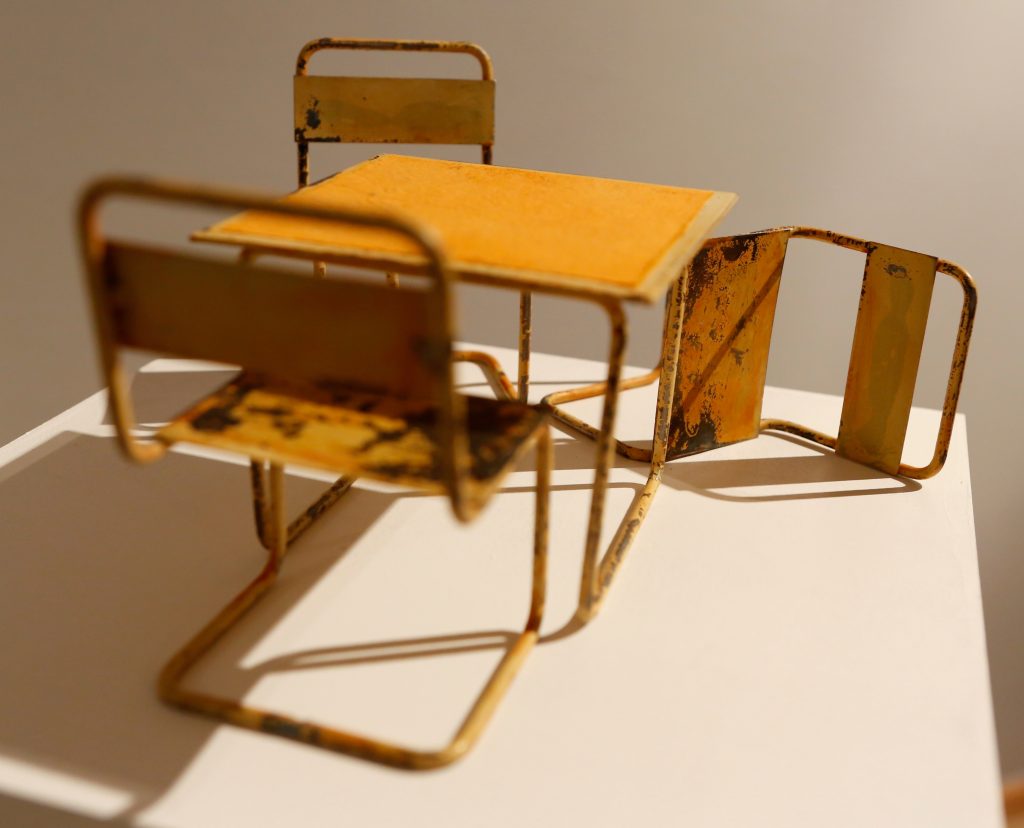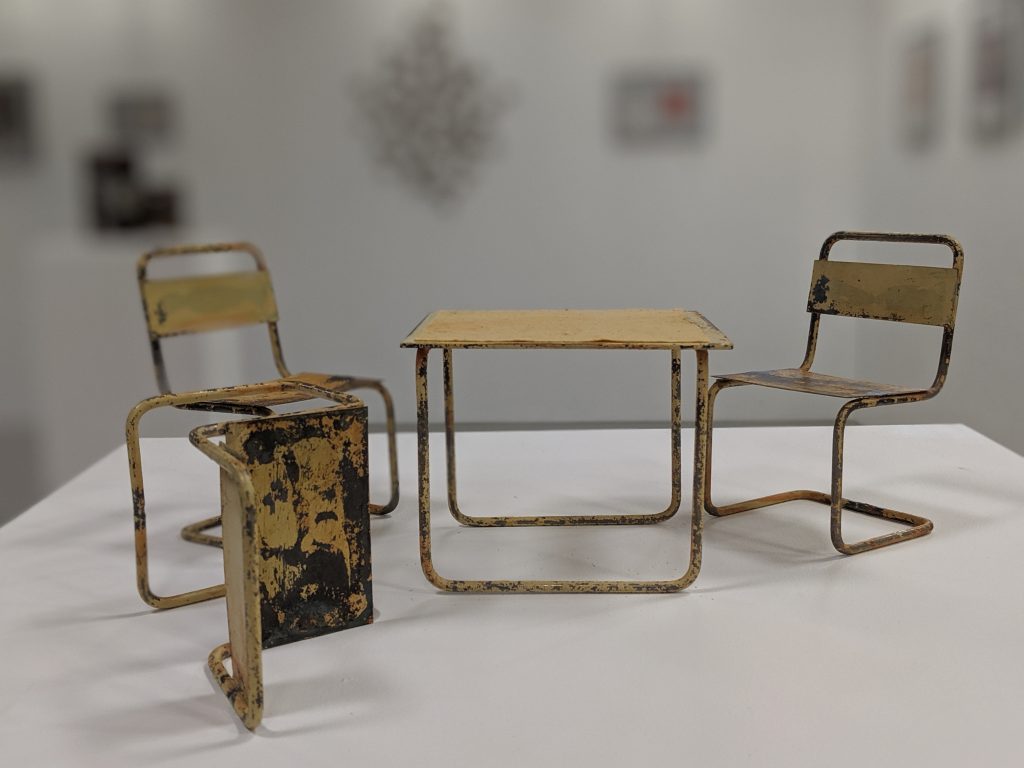“The Consultation” (2014) reflects on the hopes of patients in their treatments at the very start of the antibiotic age and the increasing contemporary challenge of antibiotic resistance. These altered doll-sized modernist chairs and table have been stained orange with Prontosil, a sulfa medicine created in 1932 and based on Dr Paul Ehrlich’s concept of the ‘magic bullet’. It was synthesised from a red chemical dye and paved the way for the antibiotic age. The fallen chair represents the moment that the healthcare practitioner shares the shattering news to a patient that the drug they have put their faith in is proving ineffective and their disease has become resistant, the other chair represents their carer who can only stand by.

Modernist design and architecture was strongly influenced by infection control methods and the sanatorium movement as a means of combatting tuberculosis, which allows us a glimpse of the significance of the disease culturally on our society.

The history of textile dyes and microbiology is inextricably linked: from ancient natural dyes with antimicrobial qualities such as madder root and woad to antibiotics derived from chemical dyes. Diagnostic tools also reveal the link, through microscope stains and colour-changing bacterial growth media.

The series of wall based works entitled “Magic Bullets” explore the development of the Prontosil and other sulfa drugs in the period before the potential of penicillin had been realised.

